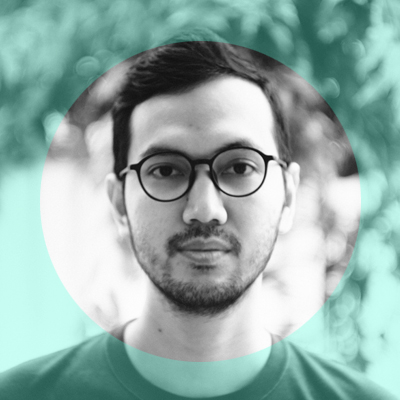
Following lecturer and researcher Arif R Wahid’s captivating presentation at the MA Narrative Environments alumni event last month, we caught up with him in more depth about his inspiring post-disaster school design project in Indonesia, the global issues designers are responding to and a few words of advice for our students and fellow graduates.
What is your current role?
I am a lecturer and researcher in the Department of Architecture, Universitas Indonesia. My main roles are teaching studio courses, researching, and working on several built projects too.
Describe a recent narrative environment you’ve worked on since graduating that you’d like to share with our alumni community.
Starting in 2018, I worked on a project called “Sekolah Indonesia Cepat Tanggap”, a quick-response post-disaster school design incorporating a modular plug & play system.
It was a project initiated by the Architectural Design Lab Universitas Indonesia that I am a member of, as a response to the massive earthquake that hit Lombok, Indonesia, in 2018. The modular nature of the school design makes it very efficient and fast to construct and can be adapted to various contexts. It takes approximately 2-3 weeks to build a school from scratch, within a reasonable budget.
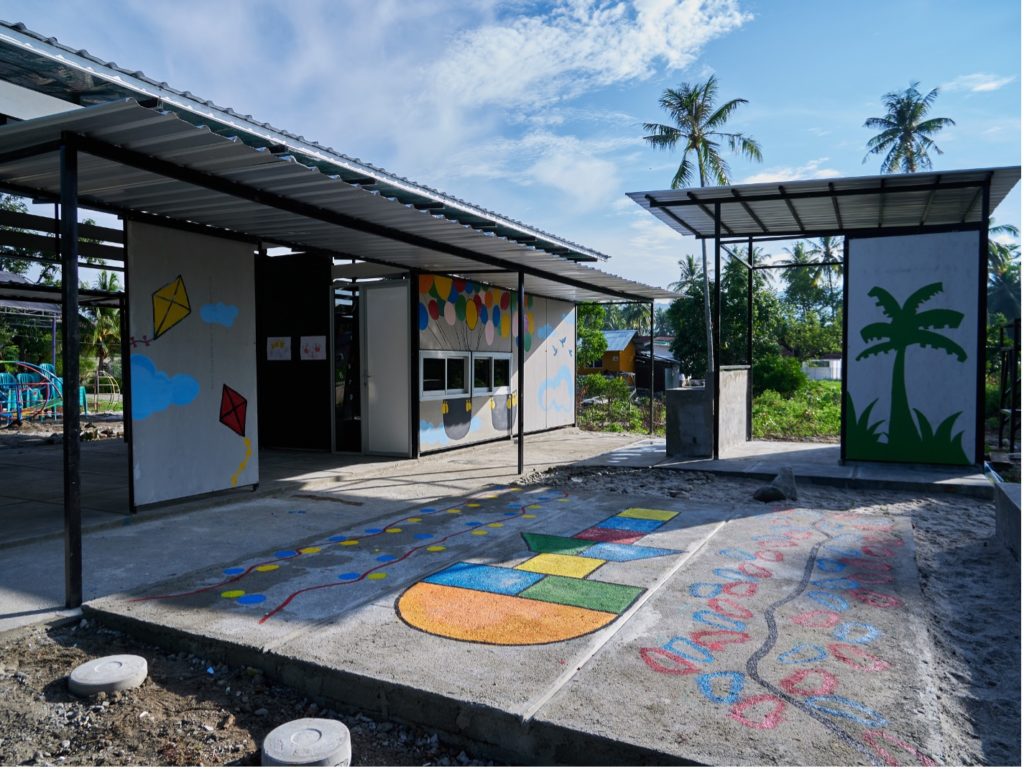
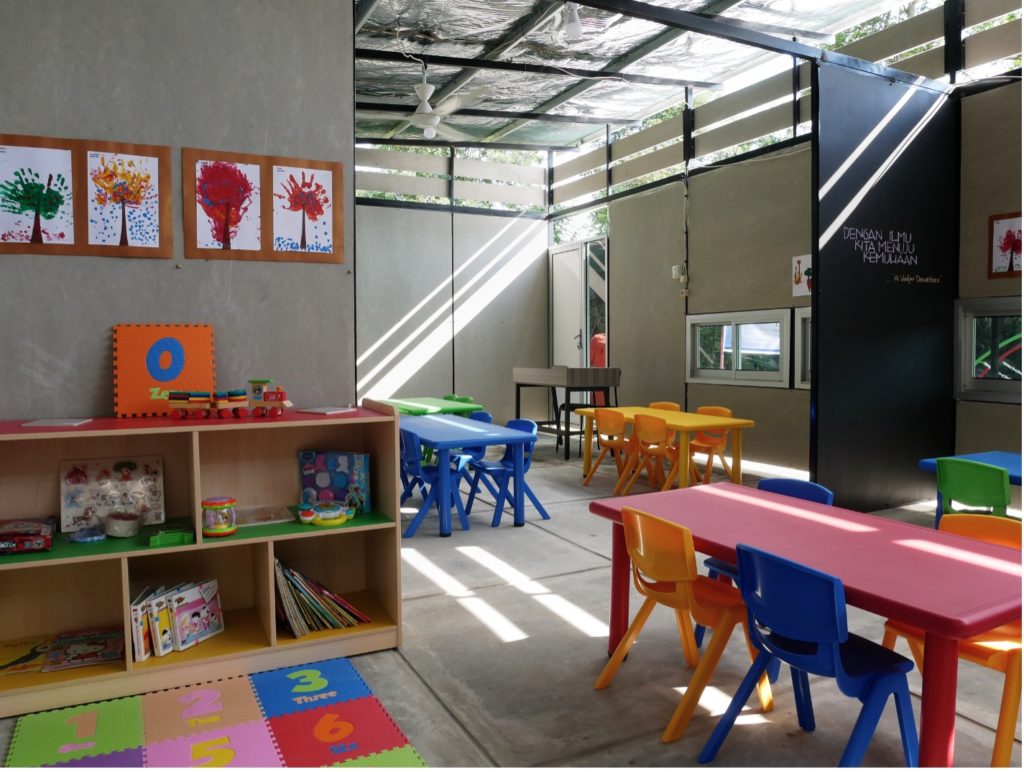
The design links the indoors and outdoors as a continuous learning space rather than a conventional classroom. In order to give each school a particular identity, they are built in partnership with the local community and the pupils’ stories are gathered in the process. We paint the schools (literally!) with images of flowers, geometric shapes, or even super-sized snakes and ladders games to encourage the students to interact, play, and day-dream with their school’s surfaces.
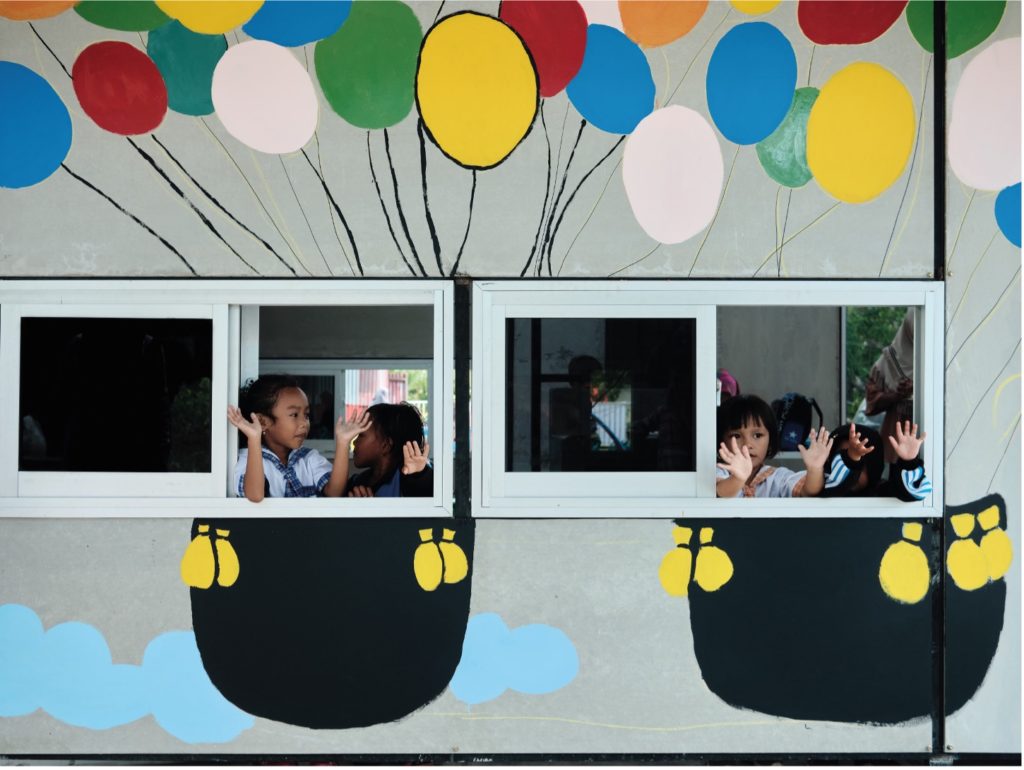
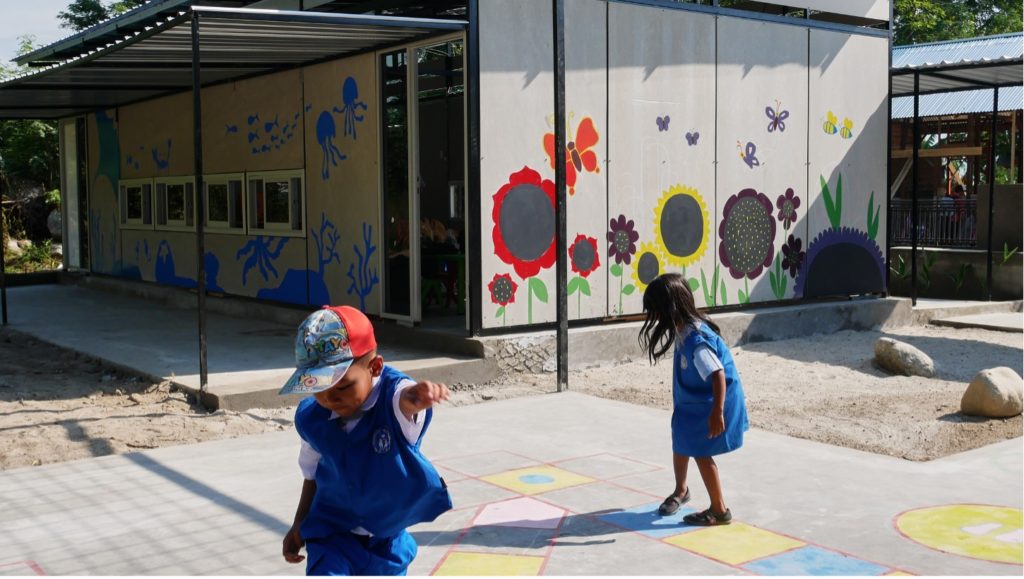
The community’s participation in the building process ensures that the school programme is effective and integrated into the community, creating a sustainable relationship that encourages the community to look after the school.
By the end of 2019 we had built eight schools across Indonesia and won the FuturArc Green Leadership Award 2019 for Institutional Category.

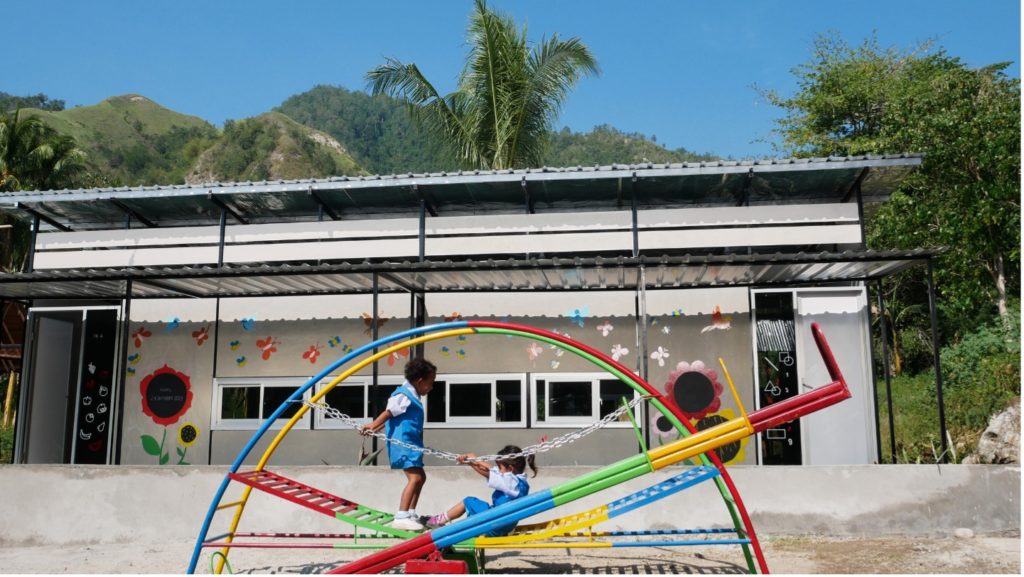
What narrative environment method or approach have you found useful in your practice?
Prototyping and action research are intrinsic to my design approach, allowing me to test the design and communicate ideas to stakeholders more fluently. These strategies introduce a ‘reality check’ to the design process, allowing for temporary fixes that serve to refine the prototype. Storyboarding practice also gives valuable input. I have done storyboarding with my students, and it has proven to be quite effective in understanding time as an integral part of spatial experience.


What hard and soft skills do you think are most relevant in your practice / industry today?
The ability to manoeuvre between new digital and physical tools in design is essential now. As for the soft skills, I would say communicate properly through many platforms to your specific audience and talk at the same level. Be more empathetic.
Being a narrative designer can involve quite a broad skill set – how did you find and create your “niche” in the design industry?
As a lecturer/interior architect, a thorough understanding of narrative has changed the way I approach designing, and how I approach people (clients, students, etc.). Through trial and error on multiple design projects, I have learnt to focus on researching and gathering stories to inject narrative into the physical space via graphics or photos. Surfaces become a source of knowledge, an almost intangible quality of the interior that opens up a dialogue between people and space. MA Narrative Environments taught me to see through the users eye first.
In your opinion, what are the key global issues designers are responding to currently? What challenges and opportunities do these create and in what ways do you think narrative designers can respond?
I think it will be interesting to see what will happen after the pandemic regarding human well-being and sustainability. Maybe we will see a permanent change in how spaces are being used, so ‘ultra-flexible’ and ‘ephemeral’ design could be some of the keywords. As people are always entangled with stories, narrative designers will be in a position to observe and understand behaviours to create more suitable designs for the future.
What advice would you give a current student about to graduate?
Keep your friends from MANE as you can have fascinating collaborations with them, keep up to date about any narrative-design-related stuff around the world, or even just have occasional friendly banter (which is priceless for me!).
Be bold, believe in your narrative approach, and don’t forget to live your student life to the fullest!!